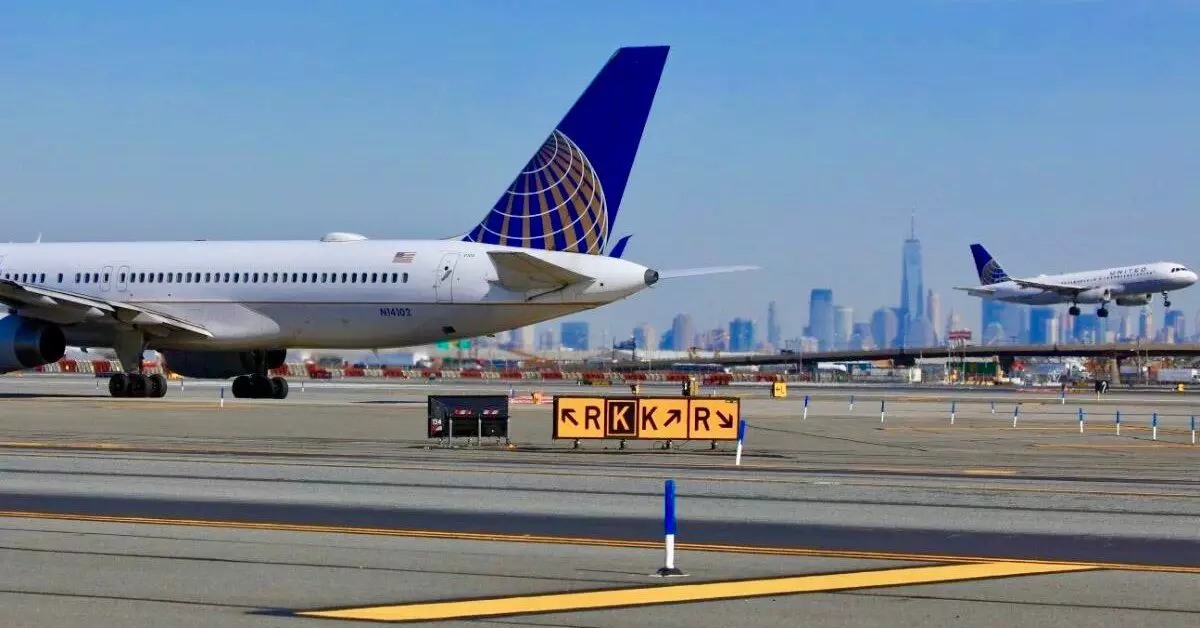In recent weeks, Newark Airport has been rocked by a series of distressing air traffic control outages, exposing the fragility of our nation’s air travel infrastructure. Twice within a short span, radar failures have disrupted operations, leaving thousands of passengers stranded. This isn’t merely a technical glitch; it’s a glaring reflection of systemic issues threatening to compromise safety and efficiency in one of the busiest airspaces in the world. The Federal Aviation Administration (FAA) reported that on a recent Friday morning, Newark’s radar went dark for an unnerving 90 seconds, rekindling fears reminiscent of a similar outage on April 28. The resulting fallout saw a surge in flight cancellations and delays, ultimately culminating in over 1,700 disruptions within the week.
With the number of air traffic controllers at a staggering low—currently just 22 against an expected 60—it’s evident that we are not just dealing with outdated technology but a critically understaffed workforce as well. This reality presents a double whammy of operational inefficiency and compromised safety. The loss of these crucial personnel has forced some air traffic controllers into trauma leave, exacerbating the already dire staffing crisis. It’s clear that our air traffic control system is in dire need of a comprehensive overhaul.
Outdated Technology in an Age of Innovation
The situation becomes even more concerning when one examines the technological underpinnings of this vital system. New Jersey Representative Josh Gottheimer aptly pointed out that much of the infrastructure, including the lines connecting controllers to the radar, is composed of antiquated copper wiring dating back to the 1970s. This is reminiscent of maintaining a classic car without any upgrades, hoping it will run smoothly in the modern world. The sheer inadequacy of this technology raises questions about the commitment to ensuring safety in our dense airspace. The previous outage was reportedly triggered by a fried copper wire, underscoring the fragile nature of a system in dire need of modernization.
The FAA has initiated steps to replace old copper lines with more reliable fiber-optic cables—a move that, while necessary, begs the question of timeliness. How long will it take for such upgrades to be completed? Given the existing backlog and the apparent pressure on air traffic controllers, any delay could continue to result in chaos at airports. If there’s a silver lining, it’s the multibillion-dollar plan announced by Transportation Secretary Sean Duffy aimed at overhauling the nation’s air traffic control system entirely. This ambitious initiative to install high-speed connections and replace outdated radar equipment is desperately needed, especially in light of recent tragic incidents that illustrate the very real dangers of an inefficient and malfunctioning system.
Economic Implications and Consequences for the Nation
Beyond the immediate inconveniences faced by travelers, there exists a broader economic impact that cannot be ignored. Newark Airport serves as a critical economic artery for the region and, by extension, the nation. Delayed and canceled flights not only frustrate travelers but also have ripple effects on commerce, business operations, and productivity. When air traffic disruptions become a recurrent theme, the long-term economic viability of connecting industries like tourism and transport is jeopardized.
Moreover, as regional economic growth hinges on an efficient travel network, the problems at Newark could signify larger systemic inefficiencies across the country. In a modern economy where agility and reliability are paramount, allowing outdated systems to persist is nothing short of a catastrophic oversight. The urgency for reform cannot be overstated; every delay is a lost opportunity not just for individuals but for businesses that rely on the timely movement of goods and people.
Overall, the struggles faced by Newark Airport are a microcosm of the larger issues confronting air traffic control systems across the United States. As we navigate this precarious moment, it is clear that innovative solutions and modern technology are not optional but essential. The call to action is undeniable: our skies must be revived, and the time for change is now.


Leave a Reply